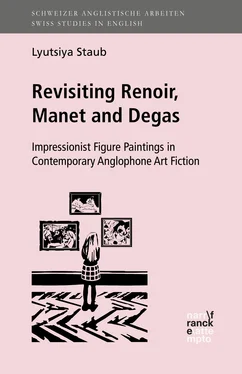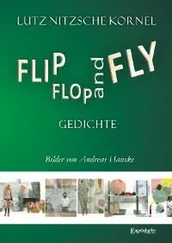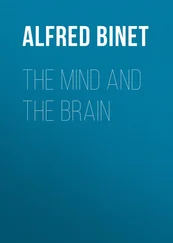As far as pictorial sources are concerned, ekphrasis can be notional (Hollander, “The Poetics of Ekphrasis” 209) or actual (Heffernan 7). Notional ekphrasis is “the description, often elaborately detailed, of purely fictional painting or sculpture that is indeed brought into being by the poetic language itself” (Hollander, The Gazer’s Spirit 4) . Hollander extends the realm of notional ekphrasis by including those ekphrastic passages which “may or may not describe some actual, but totally lost, work of art” (“The Poetics of Ekphrasis” 209), thus suggesting that notional ekphrasis describes what either never existed or does not exist anymore and therefore is not accessible in any visual form. The most widely-known examples of notional ekphrasis in classical literature are the Shield of Achilles in Book 18 of the Iliad and the Shield of Aeneas in Book 8 of the Aeneid . Both shields exist only in textual form, yet Krieger recreates the shields by translating their verbal descriptions into a visual form, which he calls reverse ekphrasis ( Ekphrasis: The Illusion of the Natural Sign xiii). According to Krieger, both attempts “seek to create what is, in effect, a reverse ekphrasis in that they seek in the visual arts to produce an equivalent of the verbal text instead of the other way round” (xiii). At the same time Krieger emphasises that the pursuit of visual representation of the shields is “ingenious” yet “vain” (xiii), concluding that “to look into ekphrasis is to look into the illusionary representation of the unrepresentable” (xv). Actual ekphrasis, on the other hand, is based on an extant work of art, that is, a work of art that can be seen in a museum or available as a reproduction. According to Heffernan, one the one hand, “the availability of a painting represented by a poem should make no difference to our experience of the poem” (7, emphasis in original), but, on the other, “the availability of the painting allows us to see how the poem reconstructs it, how the poet’s word seeks to gain its mastery over the painter’s image” (7). Therefore, actual ekphrasis implies analysis of the way the visual source is used – reconstructed, represented and reinterpreted – in an intermedial product. Indeed, writers use visual art in their works differently: “sometimes, they model the features of the characters, or their attitudes, after paintings; sometimes, they see the characters themselves, as it were, through old masters’ portraits” (Seznec 573). They may also choose to base the narrative on “a real work of art, which then acquires a symbolic value” (573) or make “the painter himself […] become a hero in fiction” (573). According to Seznec, “sometimes a picture seems to provide simply a springboard for the writer’s imagination […], sometimes a poem builds explicitly upon a canvas, a woodcut, or a statue […], sometimes […] what pictures provide is a mood, an atmosphere” (572). Similarly, in discussing a highly differentiated variety of literary transformations of pictures, Lund points out the following:
Firstly, transformation can apply to an exclusive work of art as well as to a popular-mass-produced picture. The picture in question may be actually existing or fictitious. The text may describe the picture in detail or briefly allude to it. The text may focus on individual pictorial elements isolated from a unified whole, or it may try to capture the picture as a compositional whole. It may emphasize the static character of the picture or it may interpret the picture as a dynamic scene or a dynamic structure in a way that does not only emphasize the movement per se , but also involves senses other than sight. The text as a whole may be bound to the picture; however, it may also connect select pictorial elements to spheres entirely or partially outside the structure and semantic space of the picture. The text may further be an attempt at shaping a spatial quality or at transforming characteristic elements from the iconic sphere of an epoch or by one or more pictorial artists. Actually with no direct connection to any actual or fictitious picture, it may even try to convey the structuring principles of the characteristics of style from pictorial art to the verbal form. (10)
Mindful of heterogeneous ekphrastic relationships, Lund suggests four types of literary transformations of pictures: ahistorical, epochally based, individual and associative. Ahistorical relations are based on the assumption that “pictorial art and literature have parallel or comparable structures, both governed by the same controlling aesthetical principles” (17);1 epochally based relationships express the idea of the parallelism between arts that share the same timeframe; individual relationships allude to “direct and concrete connections between texts and pictures” (19);2 associative relationships refer to a “private associative reading” (19) of the passages that include references to some artworks. The main weakness of the associative type is that it cannot be entirely separated from either epochally based or ahistorical relationships, as it “requires a consciousness about the historical situation in which certain pictures were interpreted and certain texts were written as well as a knowledge about possible analogies between the modes of expression used in literature and pictorial art” (19). The associative type of ekphrasis lacks functional transparency, as it is dependent on the reader’s knowledge and ability to recognise links to works of art; hence, the perception of the intermedial nature of the text through the associative category is rather subjective. On the one hand, Lund’s framework considers possible conditions for intermediality, such as structural parallelism between the arts driven by the same aesthetical conventions, and chronological parallelism between pictorial art and literary movements; on the other, it distinguishes between direct and indirect referencing of visual sources.
The idea of structural and chronological parallelism between the arts is also explored in Torgovnick’s research into the development of an interdisciplinary model for the novel. Although not designed as a typology of ekphrasis per se , Torgovnick’s work examines the effects of art movements on fiction. It is argued that the way in which writers conceive of and use theories of artistic movement in their writing is more important than the influence of a singular artwork (11). Torgovnick traces the relationship between the arts of a given period by comparing quintessential techniques of the particular art movement to the style of writing.3 In order to classify the degrees of involvement of the arts, Torgovnick suggests using “the visual metaphor of a continuum” (13). This continuum is divided into several segments: decorative, biographical, ideological and interpretive uses of the visual arts (the latter subdivided into perceptual and hermeneutic) (13). The continuum starts with decorative use, which applies to passages of description that are “influenced by the visual arts and suggest a particular [artistic] movement or an actual work” (14), in other words, when the historical work of art, artist him/herself or art movement are explicitly referred to. Interestingly, Torgovnick chooses to use the term “decorative” to refer to novels in which characters are either painters or sculptors themselves yet “their vocation has virtually no consequence or felt influence in the novel” (17) the only proviso being that if a character’s profession as an artist “reflected elements of the novel’s themes or form […], the use of the artist figure would probably not be just decorative but would fall further on in the continuum” (17). Thus, the decorative use of visual arts defines the minimum degree of involvement with them. The second segment of the continuum is biographically motivated use, which involves “explaining the author’s psyche or […] showing how a given involvement with the visual arts shaped that psyche so as to influence aspects of the author’s fictions” (18).4 Consequently, this category implies research into the author’s life and education. The next segment of the continuum is the ideological use of visual arts, which
Читать дальше












